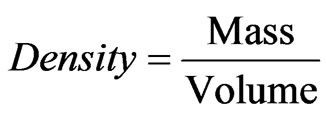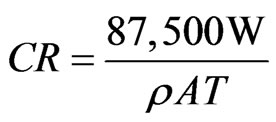Corrosion Characteristics of As-Cast Aluminium Bronze Alloy in Selected Aggressive Media ()
1. Introduction
Aluminium bronze is a material that has been established to have excellent corrosion properties. They are range of copper based alloys in which aluminium ranging to 14% is the primary alloying element [2]. Aluminium bronzes are finding increasing application in chemical, petrochemical, desalination plant, marine, power generation, aircraft, automotive, iron and steel making, electrical and building industries. Foundry products achievable from the alloy are impellers, propellers, shafts, pumps and valves, water cooled compressors, non-sparking tools just to mention a few. Aluminium bronze castings are produced by recognized sand, shell, die, ceramic, investment and centrifugal casting [1,3]. Aluminium bronze is a material found to exhibit a short cooling range characteristic [1], therefore its feasibility of production via sand casting technique locally and its corrosion behavior compared to conventionally produced aluminium bronze alloys need to be investigated. One of the conventional ways of producing this alloy has been via centrifugal casting [4].
This research work has investigated the corrosion of aluminium bronze alloy produced via sand casting technique in H2SO4, HCl, NaOH, and NaCl environment. Sand casting technique in the production of aluminium bronze alloy is more economical and an easier route for the production of aluminium bronze alloy in developing country like Nigeria where there are limited access to facilities. Improper disposed copper coils which constitute solid waste to the environment were used in the production of this alloy. This is in a bid to convert waste to useful material.
2. Materials and Method
2.1. Materials
The material used for this study was dual phase aluminium bronze produced locally via sand casting method. The charge calculation was carried out to determine the amount of charged materials to produce aluminium bronze alloy having up to 11% aluminium by mass. The chemical composition of the alloy produced is as shown in Table 1 below.
2.2. Methods
Melting and Casting
Charge calculation was carried out to determine the quantity of charge needed to produce the desired aluminium bronze alloy. Thereafter, melting operation was carried out on the charge in a pit furnace as shown in Figure 1. Casting process of this alloy started with the melt of pieces of copper coils and aluminium. The temperature of the molten metal was 1300˚C. The molten metal was poured quickly to prevent the molten metal from solidifying due to short freezing range of the metal. The density of the cast alloy was calculated by measuring the mass, area, volume of ten (10) test specimens, the density of each was calculated from first principle as shown in Equation (1):
 (1)
(1)

Table 1. Chemical composition of dual phase aluminium bronze alloy produced.
The average density of the alloy was calculated adding the densities divided by number of test specimen evaluated.
Mechanical Test
This process includes the following tests which are hardness test using Digital Rockwell testing machine, tensile test using Instron Universal Testing machine operated at a constant cross head speed of 1 mm/s in accordance with ASTM E8M-11 standard [5].
Preparation of Specimen (surface)
The dual phase aluminium bronze samples were machined and cut into test specimens of 10 mm diameter, and 20 mm length. The samples surfaces were treated by abrading them through successive grades of silicon carbide papers of grades P60, P120, P320, P400 and P600 grit, and finally on the emery cloth. They were rinsed in distilled water and then in acetone before drying. The prepared samples were stored in desiccators until the start of the experiment.
Preparation of Aggressive Environments
The environments prepared for the evaluation of its corrosion behaviour were HCl, H2SO4, simulated sea water, and NaOH media solutions. Each of the environments ranges from a concentration of 0.1 M, 0.3 M, and 0.5 M which was prepared following standard procedures.
Corrosion Evaluation of Samples
The aluminium bronze samples were immersed in all prepared environments for duration of 30 days. Electrode potential (mV) measurements between the sample surface and the corrosive environment were carried out at regular interval of 24 hr using a DT8300D digital multimeter with a zinc electrode used as a reference electrode. The reference electrode was not left in the cell for the duration of the experiment but used only at the time of taking measurement and afterwards removed and rinsed. The values obtained from the multimeter were converted to saturated calomel electrode (SCE) values with the use of the formula;
 (2)
(2)
The samples were removed from the corrosion environment with the aid of tong, cleaned in distilled water and dried with cotton wool and dried. The dried samples were weighed with digital chemical weighing balance and recorded at an interval of 3 days. Corrosion rate in mm/yr were obtained from weight loss analysis using the expression;
 (mm/yr) (3)
(mm/yr) (3)
where W is the weight loss in mg; ρ is the density of the specimen in g/cm3; A is the total exposed surface area of the specimen in cm2; and T is the exposure time in hours; mm/yr is the corrosion rate expressed in millimetres penetration per year.
3. Results and Discussions
3.1. Casting
Sand casting was selected as the optimum casting in the country based on its materials availability, low cost and found effective compared to other casting method such as centrifugal casting, die castings among others. The alloy composition was melted using a pit furnace. A sound golden yellow dual-phase aluminium bronze alloy with a density of 7.74 g/cm3 and composition as shown in Table 1 was produced. Visual examination and density measurement showed that the Aluminium bronze alloy was produced successfully via the sand casting technique despite the fact that Aluminium bronze melt has short freezing range as it transforms rapidly from liquid state to solid state. This freezing range characteristic was reported by Meigh [5].
3.2. Evaluation of Production Quality
The quality of the as-cast aluminium bronze alloy produced was evaluated by microstructural analysis as shown in Plate 1 and density measurement as shown in Table 2.
3.3. Mechanical Properties of Aluminium Bronze Alloy Produced
The results obtained for the as-cast aluminium bronze alloy are presented as shown in Table 2 below which is in close tolerance with data given reported by Copper

Table 2. Showing the mechanical properties of as-cast dual phase aluminium bronze alloy.
Development Association [4].
3.4. Corrosion Behavior of Dual Phase Aluminium Bronze Alloy at Media Concentrations of 0.1 M
Figure 2 shows the corrosion rate against exposure time of aluminium bronze samples immersed in 0.1 M of H2SO4, HCl, NaOH, and NaCl media. It is observed that at media concentration of 0.1 M, aluminium bronze alloy was found to have high corrosion rate in HCl medium compared to other three media. There were colour changes on the surface of the aluminium bronze alloy with respect to each media as shown in Figure 3, except for HCl medium which exhibited a characteristic green coloured corrosion product. These changes were found to be as a result of dissolution of protecting oxide films on the surface of the alloy [6].